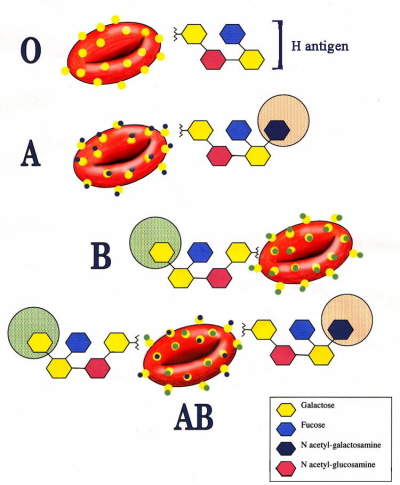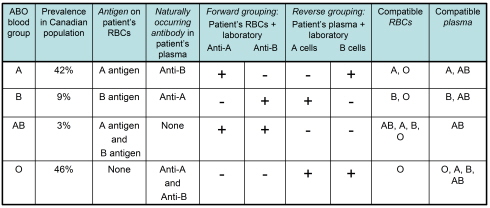Blood Transfusions
ABO
 |
|
|
| ABO blood groups at a molecular level |
- The ABO blood system is the only blood group system in which individuals possess reciprocal, naturally occurring antibodies without prior exposure to the antigen they react with. These antibodies are directed against those antigens not expressed on the individual’s own RBCs. The antibodies are mostly of the IgM isotype and can activate complement and cause serious complications, like acute intravascular hemolysis, if ABO mismatched blood is transfused.
- Note: The universal recipient of RBCs is AB type blood. The universal donor of RBCs is O type blood.
 |
| + refers to a positive test based on presence of agglutination |